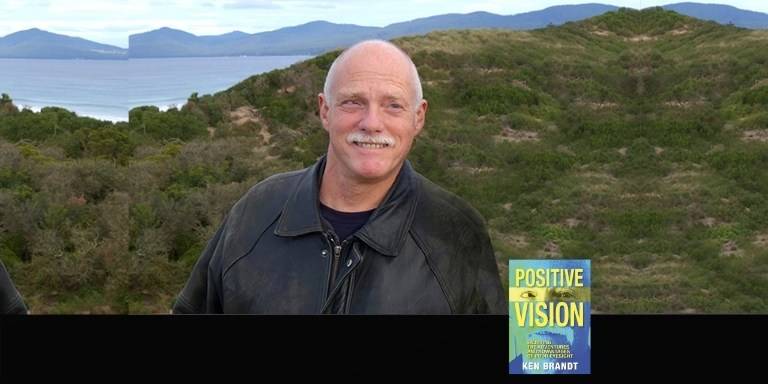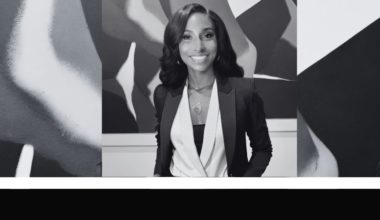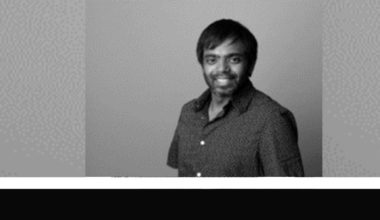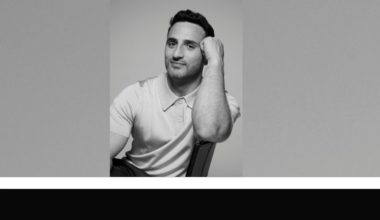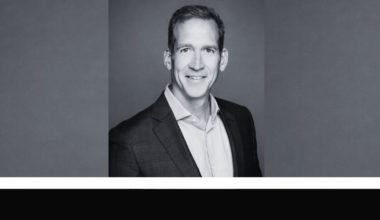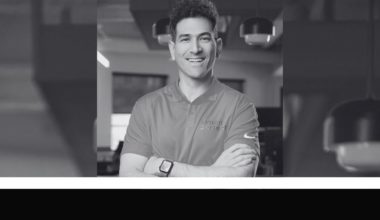Prior to retiring and becoming an author, Ken Brandt was an experienced independent director and management consultant with over 30 years of international management, information security, technology, risk and project management experience, largely in the financial services, critical infrastructure, and government sectors. His management consulting clients have included some of the largest multinational banking, brokerage, and telecommunication firms, as well as large government agencies and utility/infrastructure firms. He was based largely on Wall Street, spent a few years in Baltimore MD, and is now a long-time resident of Melbourne Australia. His clients have been based in the U.S., Australia, Europe, Asia, and Africa.
Ken also led, advised, or was an independent director (with a focus on strategy and growth) of small-medium sized enterprises. He has given guest lectures on management, information security, and risk at universities and the American Management Association. He has provided expert testimony to financial regulators, written best practices, presented speeches at industry forums, and earned professional certifications in corporate governance and management of: information technology, information security, and risk. Ken has also served on the board of directors of several non-profit organizations.
Tell us a little bit about your background and how you ended up writing a book?
I have been lucky enough to have led an adventurous and fun life and had a successful multinational business and technology career despite (or perhaps because of!) my poor eyesight. Skydiving, horseback riding, SCUBA diving were all a lot of fun despite having six eye operations and being legally blind for a lot of my life. I didn’t want to discuss my eyesight while I was working because I thought it would be detrimental to my career and management consulting opportunities. However, I am now retired, so don’t care about my career. I picked the most interesting and funny of my adventures and anecdotes – the ones that people most like hearing about over coffees or drinks – and put them into my book.
Each has the great positives of being challenging, interesting, and leading to making new friends. Working hard for many years combined with being a good saver, allowed me to retire, which lead me to becoming an author. Giving speeches and being interviewed at business conferences and forums prepared me for giving book talks. Being a manager, technologist, entrepreneur and management consultant in the ever evolving worlds of business, technology, risk, and security built up my learning skills. These learning skills proved invaluable when facing the – for me – new challenges of writing, publishing, and publicizing my first book.
On the other hand, some things are very different. As an author and publicist of my own book, I am making less money and no longer working 60 plus hours weeks. Now, in addition to spending a time on my book, I am able to spend more time with family and friends, goofing off, staying in shape, and being an amateur jazz trumpeter.
What do you hope your readers take away from this book?
Here is a vision related thought that applies no matter what business, personal, social, or physical challenge you face. Once you’ve done everything you can to protect your eyes, take care of your eye health, and safely improve your vision, then:
- Relax and be grateful for whatever sight you have;
- When you decide to go for something, give it a red-hot go; and
- Love the challenges, see the bright side, appreciate the advantages, and enjoy the adventures of poor eyesight.
What are the top three tools you are currently using to write, publish, and promote your books?
I wrote the book using Microsoft Word. My wonderful, creative, art director wife Judy Roberts Brandt used Adobe InDesign to design the book. For promotion, I am using my website, social media (LinkedIn, Facebook, Twitter, and Goodreads), plus the many really nice interviews, articles, and book reviews in a lot of places, including of course Billion Success.
What were the top three mistakes you made publishing your book what did you learn from it them?
First, maybe I should have waited until after the pandemic is under control before publishing, which would have enabled me to run around having fun giving book talks and generating more publicity sooner. On the other hand, the pandemic did give me a lot of undisturbed heads-down time to write the book and narrate the book with very few social interruptions.
Second, I wish I had learned about Goodreads and started becoming active on it sooner. It is an interesting, somewhat complicated social media site focused entirely on books, with over 80,000 members, for people who love reading books and authors. Any Goodreads members who read this, please follow my Goodreads author page. I am in the process of catching-up!
Third, and this is a bit of a wishful fantasy thought – I wish that years ago I had somehow accidently met and become good friends with everyone who writes book reviews for all the major newspapers in the US, UK, Australia, New Zealand, Canada, Ireland, etc.!
When will you consider your book a success?
In some ways “Positive Vision: Enjoying the Adventures and Advantages of Poor Eyesight” is already a success. I love the feedback so far! Many of my former business and technology colleagues have gotten in touch to say they loved it and recommended it to others. People with good and poor eyesight like the adventures, anecdotes, and humour. People with poor eyesight are inspired. Eye doctors are recommending it to some of their patients. The media are interviewing me. So far, so good.
However, it could be even more of a success. If sales keep growing so that more and more people enjoy and are inspired by it, that would be great.
Here is a small part of the chapter on why poor eyesight can lead to a longer life. This section is about a part of my life prior to going for an MBA, going into IT and Information security, and becoming a manager and management consultant.
“For a while I tried a career as a sheet metal worker. I took the test, became an apprentice, and was assigned to a good New York City sheet metal firm. Half the time I worked in the company’s South Bronx shop, fabricating ducts for heating, ventilation and air conditioning. The rest of the time I was at construction sites installing the ducts we made. I worked on two projects: One was a Midtown Manhattan skyscraper; the other was the North Tower of the World Trade Center.
It was winter, and one of the three WTC floors between the Windows on the World restaurant and the giant rooftop antennae was undergoing a gut renovation. A duct was open to the outside, and all of the other trade guys complained about the freezing wind ripping through the job site. Their griping stopped when the sheet metal worker in charge told them that one of our guys was in the duct—the vortex of the freezing wind—fixing something outside.
That was me.
I was 110 stories up, stretched out horizontally in the narrow passage. From the waist up I was outside, repairing exterior sheet metal. A coworker held onto my legs, ensuring I wouldn’t fall out. Besides fixing whatever I was supposed to fix, I also took the time to enjoy the great view. I had a good look around, including straight down to the street, more than 1,000 feet below.
Part of being an apprentice included learning more about working with sheet metal at the union’s training site. Everything seemed to be going just fine, until one of the instructors said I needed a letter from my eye doctor saying I could see well enough to be a construction worker. My eye doctor didn’t think so, and he refused to write the letter.
I was happy being a tin banger, in fact I still have my tools. I think I was doing a good job. I got along well with my coworkers and bosses.
But maybe the eye doctor was right—maybe I avoided some injuries and prolonged my life by having to choose another line of work.
Years later, I lived and worked near the World Trade Center when it was attacked and destroyed by terrorists in 2001. It was terrifying to be close to the collapsing buildings and escaping through the giant cloud of dust. It was tragic that so many people died. On a much less significant note, I also felt bad that a bit of my handiwork was gone forever.”
What have been your biggest challenges and how did you overcome them?
Growing up, I was not comfortable discussing challenges I faced with people of normal vision. They might realize that my vision is worse than they thought, feel sorry for me, or treat me differently. Instead, I found it worked for me to just silently fight any fears and enjoy my everyday adventures.
Another reason I avoided discussing the subject of poor vision until now is that I thought it might be detrimental to my career and job prospects, and I didn’t want anyone feeling sorry for me, or trying to help with things that I don’t need assistance with. Now I am retired, so I don’t care about my career. Plus, I hope this book will help and amuse people with poor eyesight and their friends and families.
What is the one thing you wish you knew before publishing your book?
I wish I had known how much fun it would be to write and discuss, and how much my business friends would enjoy it – I should have written it sooner!
Connecting with people on Facebook, Twitter, Goodreads, and especially LinkedIn seems to be working well. It has led to many interviews, articles and book reviews, as well as the book being carried by additional book sellers.
If you had the chance to start your career over again what would you do differently?
Part of me says nothing, because I have enjoyed my life, had a successful business and entrepreneurial career and lots of fun adventures, and met my wife of twenty plus years.
Part me says it might be boring to re-live the same life. No suspense, always knowing what would happen next. So, it might be fun living a whole new exciting set of adventures – with the hope of course – that I would still somehow meet and marry my wife!
Take the online MOOC course Learning How To Learn – there is a lot to learn about writing, publishing, and publicizing a book, so you want to be as effective a learner as possible. Participate in Toastmasters and/or give as many speeches as possible during your business career to prepare yourself for book talks. Read The Elements of Style, which is a short snappy helpful book for anyone writing anything.
If you only had $1000 dollars to promote a new book, knowing everything you know now, how would you spend it?
Ha ha, I have not yet decided whether to spend any money publicizing my book! So far sales are going well without my spending any money – but publicizing does take valuable time. At this point, if I were to spend $1,000 I might spend a small amount entering a Publishers Weekly book contest and the remainder on Amazon advertising. If my book does well in a Publishers Weekly contest it would be well worth it. I love local bookstores, but Amazon dominates book sales, so is probably the most effective place to advertise books. But again, I haven’t made a firm decision.
I have two suggestion.
After you have written and edited your heart out, take one more step before giving it to your professional editor. Ask ten friends and business associates to review your draft and give you suggestions. You will be overwhelmed with the generosity of the time and thought your they put in, and the value of their suggestions. Some will have suggestions related to re-arranging the book, deleting sections, and adding sections. Some will be super copy editors. This worked so well that I did it again with ten other friends and business associates, and their suggestions were just as helpful. After you incorporate the 95% of the suggestions you probably agree with – your book will be much improved and far easier for your editor to work on.
After your professional editor is almost done: re-read the latest version from your editor, decide what the most interesting 90% of your book is, and ruthlessly cut the other 10%. It is hard to do, but worth it. Your book will be shorter, sharper, better. As Yogi Berra said: addition by subtraction.
What is your favorite quote?
I love quotes, so I added an inspiring or humorous quote at the start of each chapter and section of my book. Here is what I say at the start of the About the Author section, which is near the end of my book.
“Ken does his best – some days are way better than others – to live by his three favorite quotes. This is the second of them:
The full measure of a man is not to be found in the man himself, but in the colors and textures that come alive in others because of him.
– Albert Schweitzer
I also like jokes, so I added a corny joke or two at the end of each my book’s chapters and sections. Here is the one at the end of the About the Author section.
“My optometrist told me I have bad vision…
I don’t see the problem.”
Who should we interview next and why?
Me! But wait until I’ve done a year of post-pandemic book talks and hopefully have more book marketing insights and had losts more fun adventures along the way.
Random Bonus: With the game on the line and 5 seconds on the clock, who takes the last shot? Michael Jordan, Kobe Bryant, or Lebron James?
Easy! Lebron James.
But NOT because – as written in Wikipedia – “James is the only player in NBA history to have won NBA championships with three franchises as Finals MVP. He has competed in ten NBA Finals, including eight consecutive with the Heat and Cavaliers from 2011 through 2018. His accomplishments include four NBA championships, four NBA Most Valuable Player (MVP) Awards, four Finals MVP Awards, and two Olympic gold medals. During his 17-year career, James holds the record for all-time playoffs points, is third in all-time points, and eighth in career assists. James has been selected to the All-NBA First Team a record 13 times, made the All-Defensive First Team five times, and has played in 16 All-Star Games, in which he was selected All-Star MVP three times.”
Instead, it is because LeBron just might be a Positive Vision: Enjoying the Adventures and Advantages of Poor Eyesight kind of guy. He had LASIK surgery in both eyes in 2007 and the following season had his best shooting percentage, his best free throw percentage, and his best season for personal assists in his career up to that point. As a result, he may more fully appreciate his good eyesight; and in the past he just might have enjoyed – and still remember – some of the adventures and advantages of poor eyesight.
How can we get in touch with you?
I would love to hear from you and your readers at any time. Please send me any questions or thoughts via the Contact page on my website, which is KenBrandt.com. The Contact page also give you the option of signing up for my e-newsletter and provides links to my LinkedIn, Facebook, Twitter, and Goodreads sites, where I would also be happy to connect and communicate. In addition to comments, any shares, follows, likes, etc. on social media would serve as great feedback and be very appreciated.
Author Interview: George Papazov – Path to Profit, A Trader’s Journey

